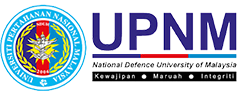MINI REVIEW ON NANOFIBRILLATION TECHNIQUES TO OBTAIN CELLULOSE NANOFIBER FROM LIGNOCELLULOSIC BIOMASS
Keywords:
Cellulose nanofiber, nanofiber technique, lignocellulosic biomassAbstract
Cellulose nanofiber (CNF) has been recognized as a new family of sustainable nanomaterials with significant mechanical, colloidal, low density, renewable and biodegradable properties. These properties make CNF a promising material either as an additive or primary material for the development of various applications such as for packaging, coatings, adsorbent, papermaking, biomedicine, cosmetic and automotive industries. Prior to CNF production, cellulose has to be isolated from various sources of lignocellulosic biomass such as oil palm, bamboo, flax bast, hemp, kraft pulp, and rutabagas. The isolated cellulose then can be nanofibrillated into CNF using several nanofibrillation treatments. However, the nanofibrillation treatment is one of the major factors that can influence the final characteristics of CNF. The selection of nanofibrillation treatment is important as each treatment produces CNF with different properties especially in terms of diameter sizes, lengths, thermal, crystalline and mechanical properties. The CNF properties have to comply with the requirement of the targeted application, as different applications require different specifications of CNF. Other external factors may also influence the properties of CNF. Hence, this review focused on discussing the current CNF production treatment as well as factors that may influence the nanofibrillation process of CNF production.
Downloads
Downloads
Published
How to Cite
Issue
Section
License

This work is licensed under a Creative Commons Attribution-NonCommercial-ShareAlike 4.0 International License.



